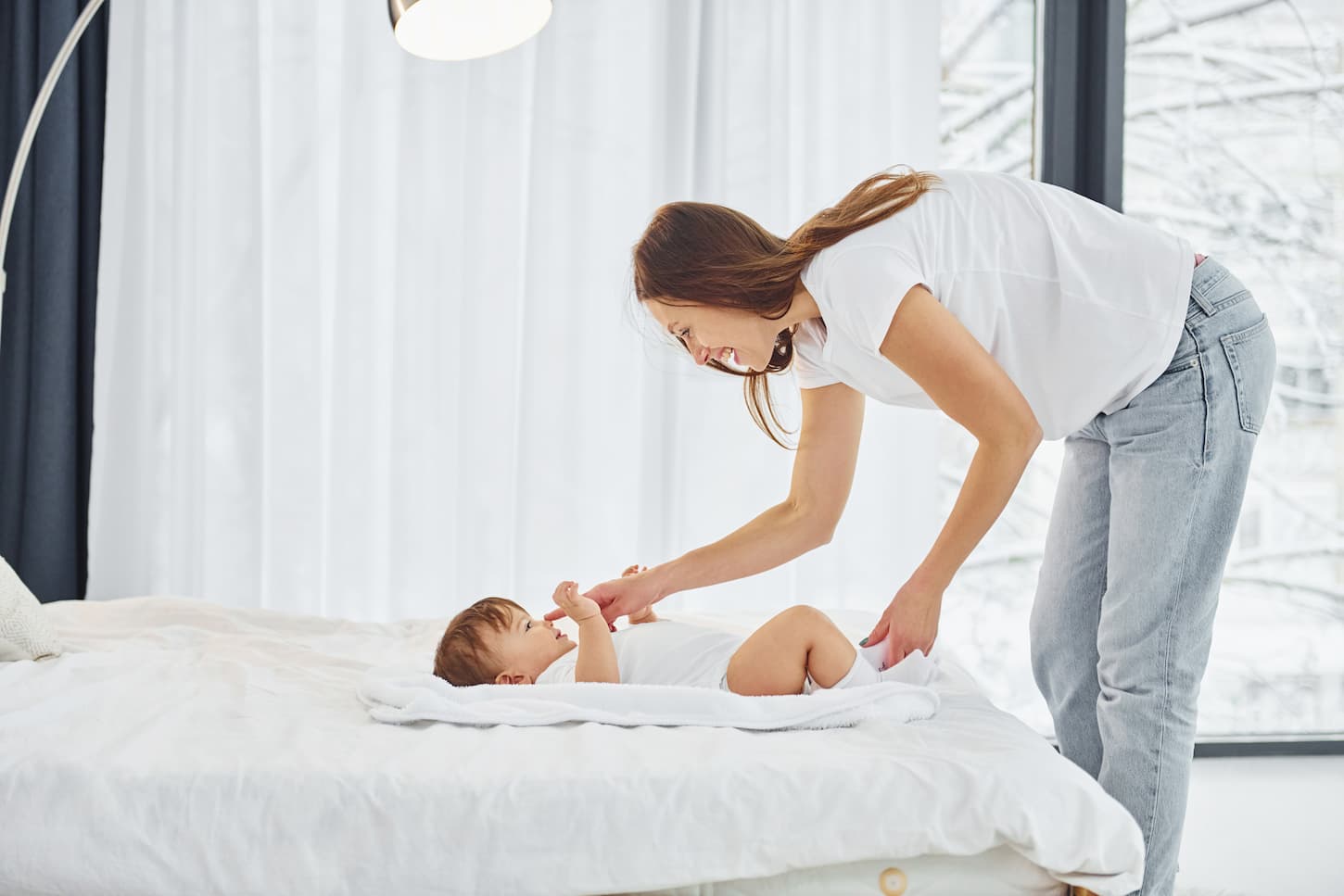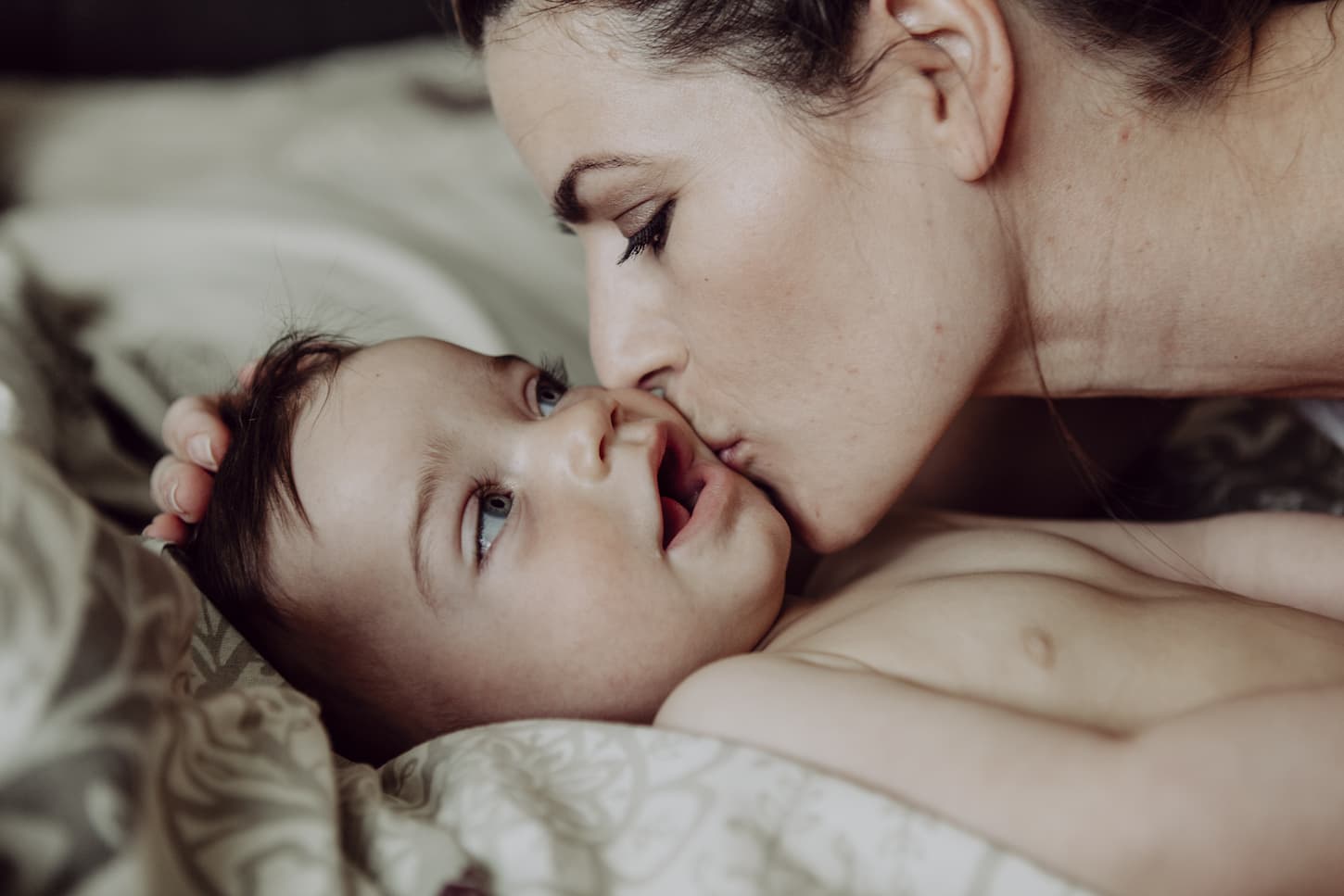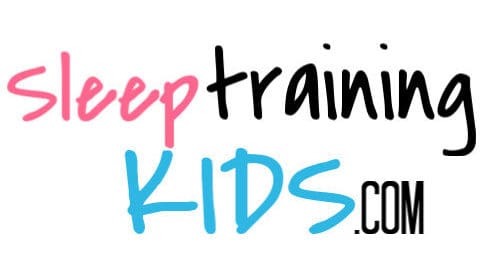As a parent, you likely will get to a point where you consider sleep training your baby. You probably have started to wonder what age you can begin the process and what type of method you think would work best for you and your baby. But how do you decide which one to pick for a baby under 6 months old?
The best sleep training method for babies under 6 months is the one that works and is developmentally appropriate.
- Newborns can start with gentle, no-crying sleep training practice. This includes fading, pick up put down, the chair method, and others.
- The Ferber method is a great place to start for babies between 4-6 months of age. It’s also the best place to start if you aren’t sure where to begin.
- Cry it out shouldn’t be attempted until at least 4-6 months of age, although I generally recommend waiting until after 6 months of age.
Ready to find a sleep training method that will be the right fit for you and your little one, no matter your parenting style? Let’s do this.

Best Sleep Training Methods for Babies Under 6 Months
While you shouldn’t start sleep training the day you bring your baby home from the hospital, there are several sleep training methods appropriate for babies under 6 months of age. That being said, if you treat sleep training more like “practice” than a “you must be able to sleep 12 hours right now!”, then you can still sleep practice train your newborns.
The trick is this: make sure you have a bedtime routine in place before you begin sleep training. Give them a bath, get them dressed in their pajamas, and read some books. It will help with the transition to bed if the baby knows what to expect.
Now, let’s dive into the best methods by age. We’ll start with newborns.
Best Newborn Sleep Training Options: Tears-Free Options
If you are adamant about not allowing your baby to cry themselves to sleep, you do have options for sleep training. Just remember that to treat it like practice. And, by treating it like practice, you may actually be able to skip formal sleep training altogether. That’s the power of practicing!
Fading Technique
With the fading technique, you want to reduce the amount of time you spend doing your pre-bedtime activities.
| Who it’s For: | Who it’s NOT For: |
|---|---|
| Babies of any age | Babies who require a long, change-free bedtime routine |
| Babies who do well being put down | Colicky babies |
| Families with time at bedtime | Families with time constraints |
For example, if you typically rocked them to sleep for 20 minutes before, reduce that down to 15 minutes over several days. Then, reduce it further over subsequent days or weeks. The idea is to get them to be used to falling asleep on their own.
For my best tips, tricks, and ideas on using the fading technique, be sure to read my article on 15 things to know and do about fading.
Chair Method
If you think your baby will do better with you in the room, the Chair Method might be the right fit for you.
You will sit in a chair next to your baby’s crib providing support for them until they fall asleep. Each night you will move the chair further away from the crib until you are out of the room completely.
| Who it’s For: | Who it’s NOT For: |
|---|---|
| Babies of any age | Colicky babies |
| Babies who do well being put down | Babies who get upset at seeing a parent and not being held |
| Families with time at bedtime | Families with time constraints |
To read all about the chair method’s steps, methodology, and my best hacks, make sure you read my article on the chair method right here.
Pick up and Put down
This method will have you hovering over their crib a bit. When you lay them down, pat their backs or gently stroke their stomach. If they begin to cry, pick them up for reassurance before putting them back down. Do this until they fall asleep on their own.
This one is, in my opinion, a better option for calmer babies who don’t mind being put down. If your baby is like mine, they won’t do well with this method. They’ll want to fall asleep being held – and keep being held while sleeping.
| Who it’s For: | Who it’s NOT For: |
|---|---|
| Babies of any age | Colicky babies |
| Babies who do well being put down | Babies who wake up when not held |
| Families with time at bedtime | Families with time constraints |
Even so, this method works well for a lot of families, so don’t be afraid to try it. In the worst-case scenario, you’ll have found a method that doesn’t work as well for your baby right now.
Best Place to Start at 4-6 Months: Ferber Method
If you don’t know where to start, the Ferber method is a great first sleep training method. It’ll give you a really good framework to test how things go – and to help your family see if a some-tears-are-okay approach works for your family.
Here’s a quick recap of how the Ferber method works. You want to steadily increase the time in between checking on your baby until they fall asleep. After each amount of time, you can go in and pat their backs as a method to console them. Avoid picking them up and try to stay for only about 15 seconds.
| Who it’s For: | Who it’s NOT For: |
|---|---|
| Babies over 4 months old | Babies less than 4 months old |
| Parents who don’t mind a few tears | Parents who want a no-tears approach |
| Families who need sleep sooner than later | Families who don’t mind cosleeping |
But don’t worry – you don’t have to get the whole book and read it (although I do recommend it). I’ve got a whole article right here on Sleep Training Kids that will detail all of the steps. That way, you can try it out and see if it’s even right for your family.
Cry it Out: Best to Start at 4-6+ Months Old
If checking on your baby with the Ferber Method only makes the situation worse, you may want to consider the cry-it-out method.
With cry it out, you can either determine a set amount of time you want to wait before going in to check on them, or you can change your check-ins to being done via a camera or other monitoring system. That way, you’re making sure they’re safe without agitating them.
The other option with cry it out is complete extinction, where you let them cry until they fall asleep.
| Who it’s For: | Who it’s NOT For: |
|---|---|
| Babies over 4-6 months old | Babies less than 4-6 months old |
| Parents who don’t mind a few tears | Parents who want a no-tears approach |
| Families who need sleep sooner than later | Families who don’t mind cosleeping |
| Babies who can handle crying | Babies who get sick when crying |
Again, please don’t worry. I’m not going to leave you without a ton of details, tips, and tricks for this method. If you’re wanting to research more about cry it out, I’ve got several resources for you:
- Cry it out sleep training: a complete guide
- How long do you let a baby cry it out? (25 things to know)
As your baby gets older, I’ve got other resources for you on both the cry-it-out and tears-free methods. So make sure you plan ahead for good sleep as your baby grows.
Which Sleep Training Method is Right for Your Baby?
Please don’t think there’s ever one right (or wrong) answer. The “right” sleep training method is going to be the one that helps your family be functional and happy.
Even so, there are generally two categories of sleep training methods: ones that call for a few tears and those that don’t. There is some trial and error when it comes to finding the best sleep training method.
If you don’t know where to start and your baby is at least 4-6 months old, start with the Ferber method. If you’ve got a newborn, start by building a comforting bedtime routine – and go from there into a tears-free methodology.
You also have to do what’s comfortable for you. If you can’t bear to hear your baby cry in their crib, try one of the tear-free options.
Can I Trick my Baby to Sleep?
Sleep-deprived parents come up with some amazing hacks to get their overtired baby to fall asleep. Just know that most of these hacks are short-term gains – and most have long-term losses associated with them.
For example, you may be able to get an exhausted baby to sleep by putting them in their car seat and going for a drive. However, you may then quickly find yourself being stuck in a cycle of car rides and increasing crankiness levels in your baby.
In other words, the biggest problem with “tricking” babies into sleep is you likely won’t be able to recreate it every time you put them down for bed. You don’t want to get into a habit of relying on various factors that you can’t deliver every night.
Babies should be able to sleep in their cribs without the need for a song and dance, or a vacuum running in the hallway. If a soothing sound is all they need, consider buying a white noise machine. Here are the white noise machines I use and recommend.
Can Babies Under 6 Months be Sleep Trained?
Babies under 6 months old can be sleep trained, but you shouldn’t start formal sleep training too early. Consider waiting until they are at least a few months old. You want to make sure your baby is hitting the appropriate milestones before you begin sleep training.
The first few months of a baby’s life are sometimes referred to as the “fourth trimester.” You want to give your baby some time to adjust to the outside world before you begin the sleep training process. During this fourth trimester, you can practice good sleep hygiene. And, in many cases, simply having good sleep hygiene can preempt the need for sleep training.
In other words, having a good bedtime routine in place can help you skip the need for formal sleep training. But if it doesn’t work? Then you can always use the more formal sleep training methods that are developmentally and age-appropriate.
Important note: if your baby was born prematurely, you will want to take that into consideration. Use their adjusted age to gauge when to start sleep training.

How Old Does a Baby Have to be in Order to be Sleep Trained?
Ideally, a baby should be between 4 and 6 months old before you begin sleep training. About 4 months old is the prime time for a sleep regression to begin, so it’s the perfect opportunity to help them fall asleep by themselves.
However, if your baby is older, that’s okay, too. Older babies (and even big kids) can still benefit from sleep training – especially if they have sleep-related issues.
Trying to sleep train your baby too early will likely prove ineffective. Their sweet, little brains aren’t ready yet to get into a regular sleep pattern. However, you can start building good sleep hygiene habits. In many cases, this will make sleep training totally unnecessary.
Finding the best sleeping training method for babies under 6 months can help you and your baby get a better night’s sleep. Sometimes a baby has to be taught how to fall asleep on their own, even if they, and you, shed a few tears in the process.
